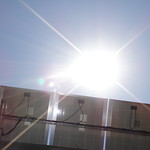The world’s worst nuclear disaster at Fukushima in Japan has had economic effects on nuclear-owning power utilities. What will happen to the Southern Company as Georgia Power customers and U.S. taxpayers get tired of paying for cost overruns which are already almost a billion dollars?
 Erik Kirschbaum wrote for Reuters 26 May 2012,
Germany sets new solar power record, institute says,
Erik Kirschbaum wrote for Reuters 26 May 2012,
Germany sets new solar power record, institute says,
The German government decided to abandon nuclear power after the Fukushima nuclear disaster last year, closing eight plants immediately and shutting down the remaining nine by 2022.
![]() And closing those nuclear plants caused German electric utility
E.ON to lay off up
to 11,000 staff, to take its first quarterly loss in a decade, and to
cut its shareholder dividend.
According to Forbes,
E.ON
in 2006 was the biggest electric utility in the world
And closing those nuclear plants caused German electric utility
E.ON to lay off up
to 11,000 staff, to take its first quarterly loss in a decade, and to
cut its shareholder dividend.
According to Forbes,
E.ON
in 2006 was the biggest electric utility in the world
 (and TEPCO, owner of the Fukushima nuclear plants, was number 6).
In March 2012, E.ON was
number 22.
(TEPCO dropped from number 6 to
number 45.)
Southern Company (SO) jumped from number 16 in 2006
to
number 6 this year,
quite possibly because E.ON and TEPCO and others dropped so rapidly.
(and TEPCO, owner of the Fukushima nuclear plants, was number 6).
In March 2012, E.ON was
number 22.
(TEPCO dropped from number 6 to
number 45.)
Southern Company (SO) jumped from number 16 in 2006
to
number 6 this year,
quite possibly because E.ON and TEPCO and others dropped so rapidly.
Hm, I wonder what Southern Company’s nukes, already almost $1 billion over budget, will do to SO’s ranking in Forbes’ list of top utilities? Maybe there’s a reason Moody’s called nuclear “a bet-the-farm risk”. What will SO do when this big nuclear bet goes bad? And how big a bill do Georgia Power customers and we the taxpayers want to let SO run up that we’ll get stuck with?
-jsq













